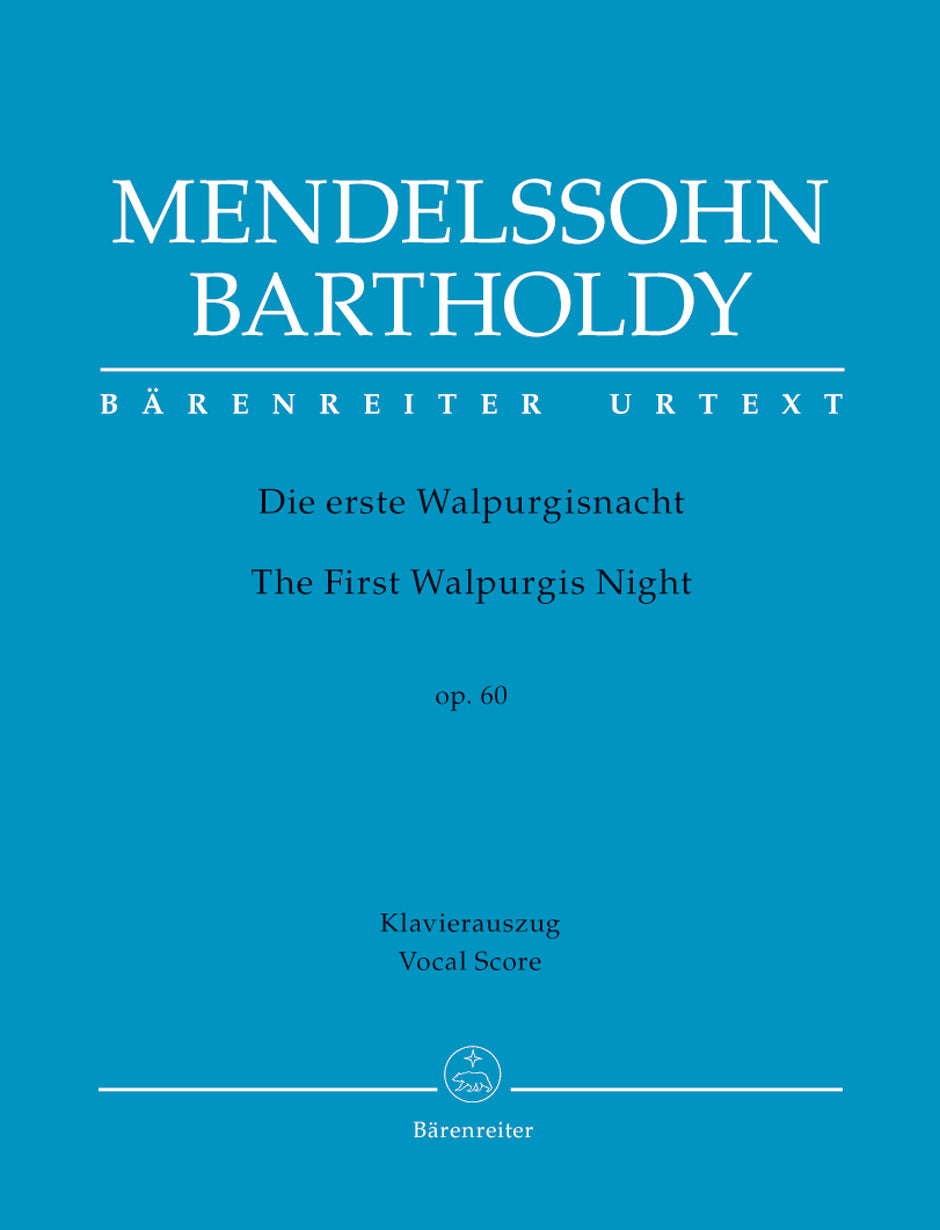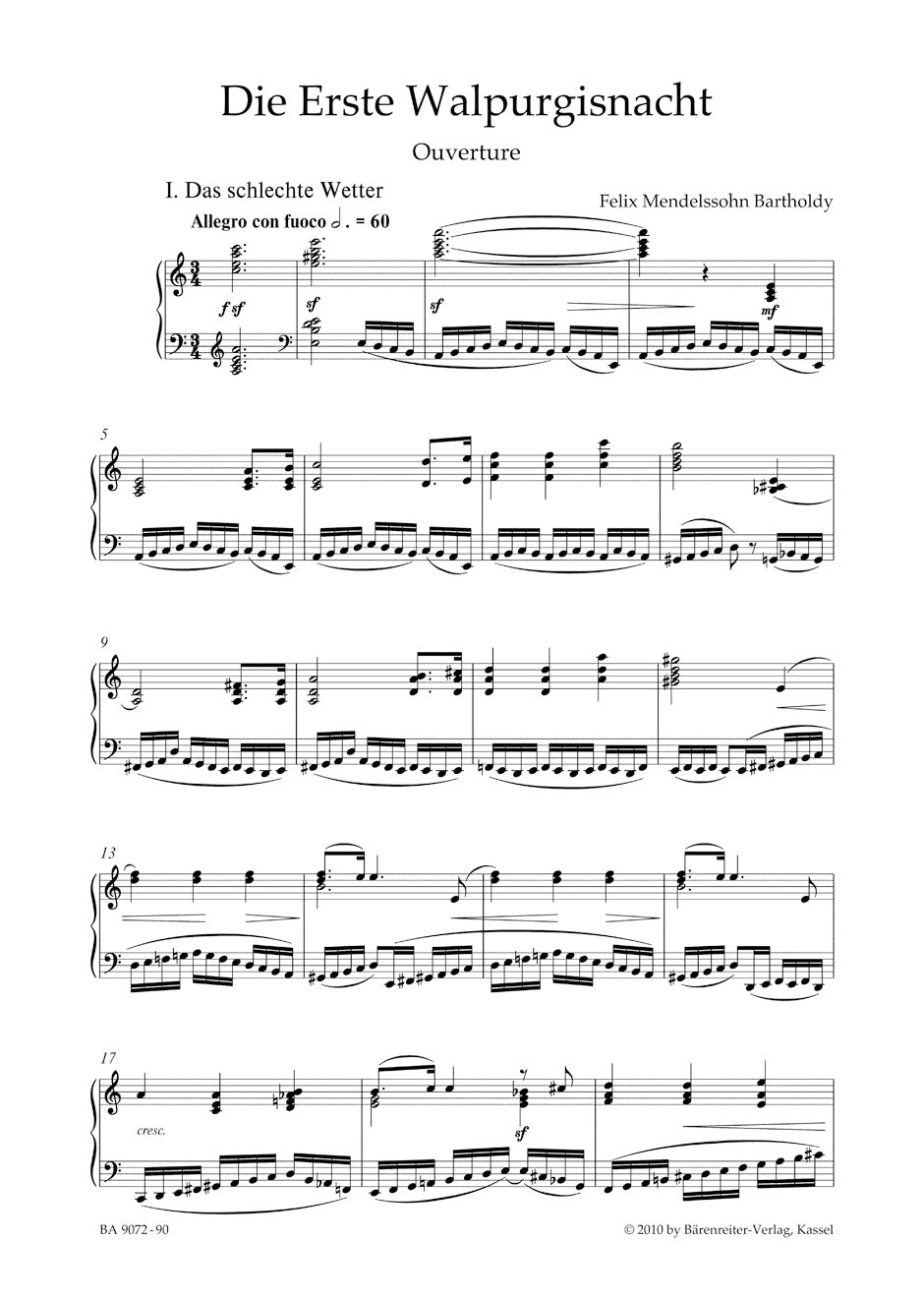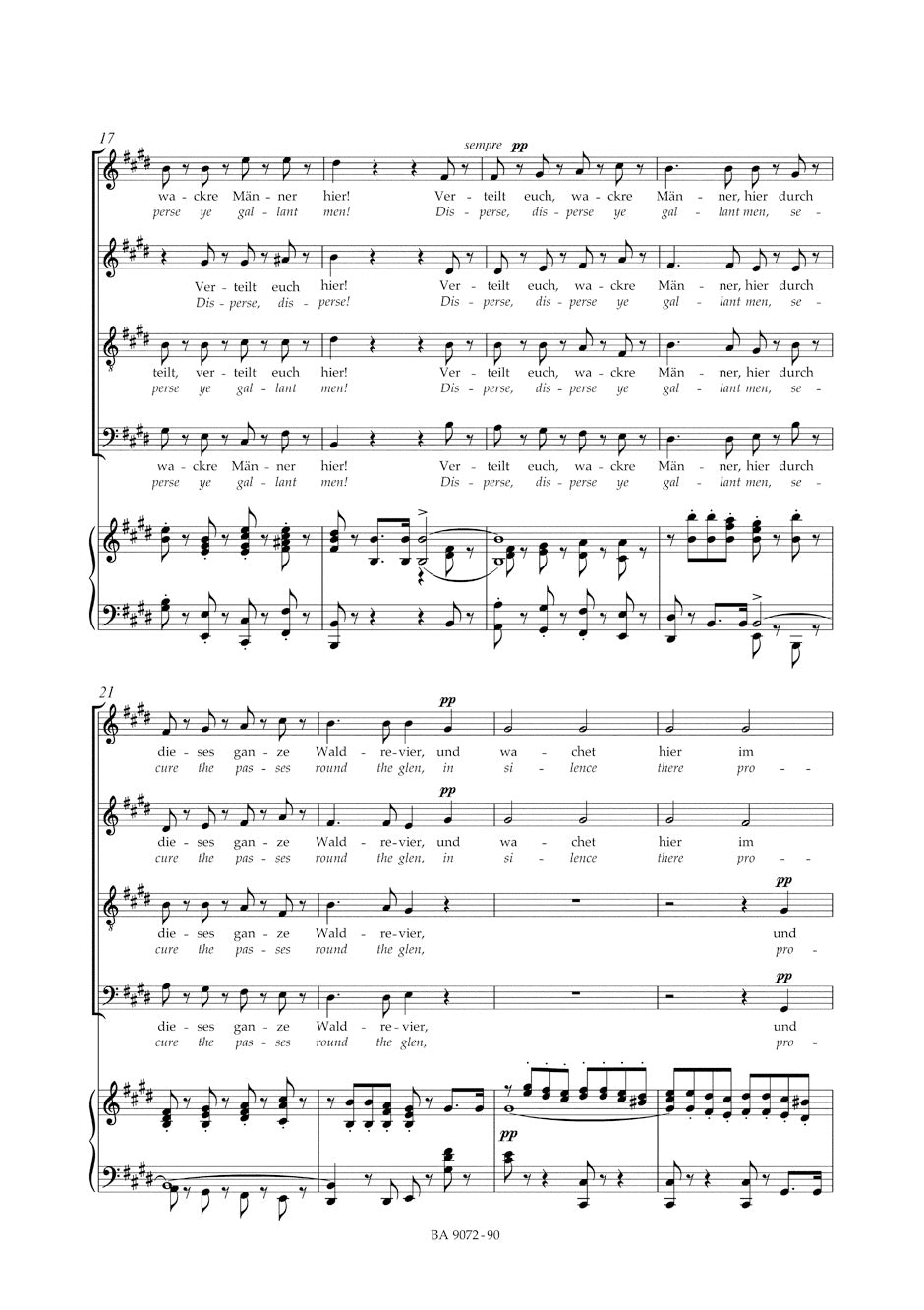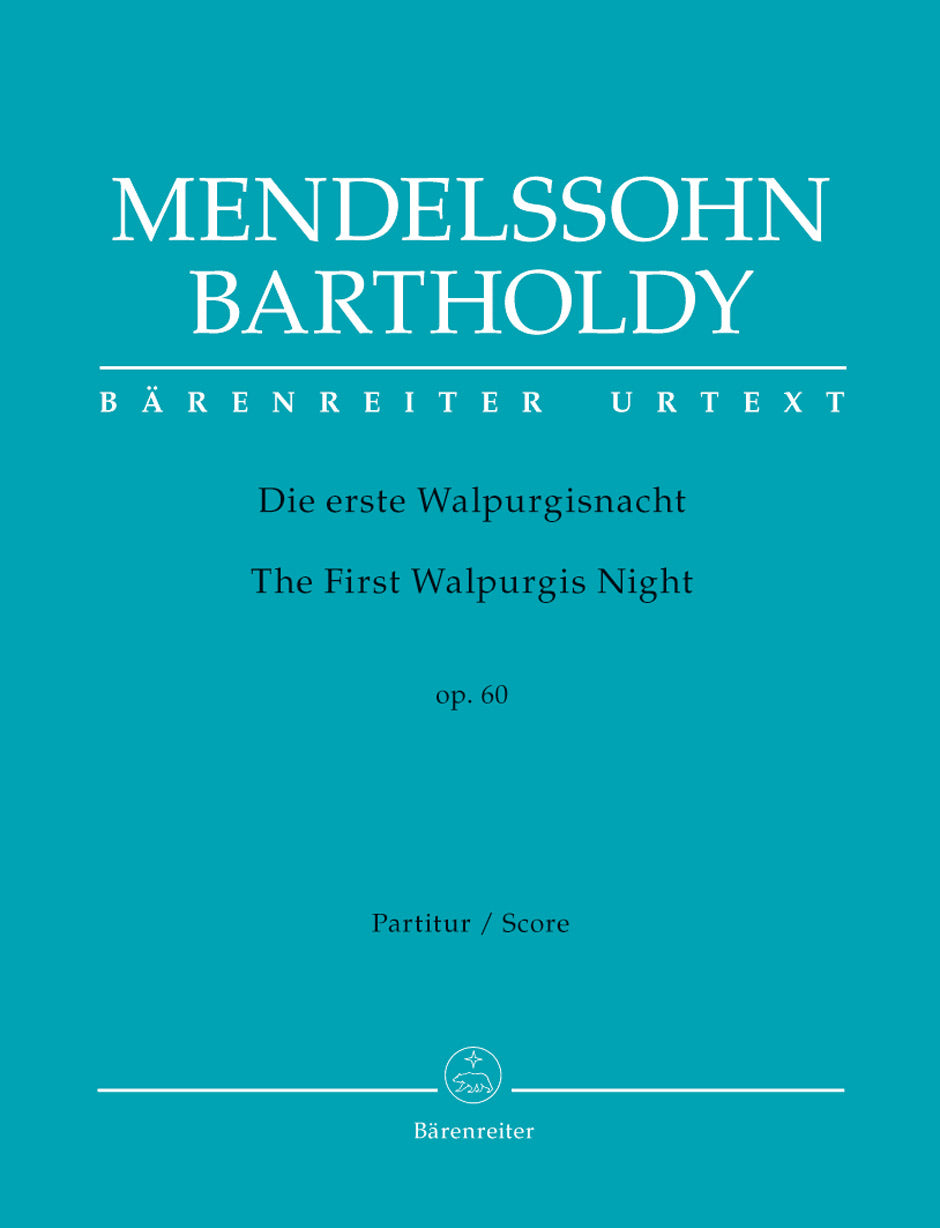Mendelssohn: Die erste Walpurgisnacht, MWV D 3, Op. 60
The First Walpurgis Night
In stock and typically ships within 1 business day.
- Composer: Felix Mendelssohn (1809-1847)
- Editor: John Michael Cooper
- Instrumentation (this edition): Piano Reduction, SATB Choir
- Originally for: SATB Choir, Orchestra
- Work: Die erste Walpurgisnacht (The First Walpurgis Night), MWV D 3, Op. 60
- Work Languages: English, German
- ISMN:
- Size: 7.5 x 10.6 inches
- Pages: 100
- Urtext / Critical Edition
Description
During the summer of 1799, Goethe wrote his ballad "Die erste Walpurgisnacht" and asked his friend Carl Friedrich Zelter to set the work to music. Zelter however, felt unable to do this, and so Goethe's wish was only realised thirty years later by Felix Mendelssohn. The "heavenly words" of the pagan ballads had impressed the composer so much after a visit to Weimar, that he was inspired to set them to music. in 1832 the composition took shape and was performed a year later in the Sing-Akademie in Berlin.
Mendelssohn was, however, unhappy with the first version of the work and held it back, until he decided on a radical revision of the work ten years after its premiere.
"Die erste Walpurgisnacht" was first performed in 1843 in Leipzig, in the presence of Robert Schumann and Hector Berlioz, in the form in which the work is still performed today.
Publishers use a lot of words to describe what they sell, and we know it can be confusing. We've tried to be as clear as possible to make sure you get exactly what you are looking for. Below are descriptions of the terms that we use to describe the various formats that music often comes in.
Choral Score
A score for vocalists that only contains the vocal lines. The instrumental parts are not there for reference. Generally, cheaper than a vocal score and requires multiple copies for purchase.
Facsimile
Reproductions of the original hand-written scores from the composer.
Full Score
For ensemble music, this indicates that the edition contains all parts on a single system (there are not separate parts for each player). In larger ensembles, this is for the conductor.
Hardcover
Hardbound. Generally either linen-covered or half-leather.
Orchestral Parts
Similar to a wind set, this is a collection of parts. In the case of strings, the numbers listed are the number of copies included, though generally these are available individually (often with minimum quantities required).
Paperback
When publishers offer multiple bindings (e.g. hardcover) or study scores, this is the "standard" version. If you're planning to play the music, this is probably what you want.
Performance / Playing Score
A score of the music containing all parts on one system, intended for players to share. There are not separate parts for each player.
Set of Parts
For ensemble music, this indicates that there are separate individual parts for each player.
Solo Part with Piano Reduction
For solo pieces with orchestra, this is a version that contains a piano reduction of the orchestra parts. For piano pieces, two copies are typically needed for performance.
Study Score
A small (think choral size) copy of the complete score meant for studying, and not playing. They make great add-ons when learning concertos and small chamber works.
Vocal Score
A score prepared for vocalists that includes the piano/organ part or a reduction of the instrumental parts.
Wind Set
For orchestral music, this is a collection of wind and percussion parts. The specific quantities of each instrument are notated.
With Audio
In addition to the printed music, the edition contains recordings of the pieces. This may be an included CD, or access to files on the internet.
With / Without Fingering (Markings)
Some publishers prepare two copies - a pure Urtext edition that includes no fingering (or bowing) suggestions and a lightly edited version that includes a minimal number of editorial markings.






